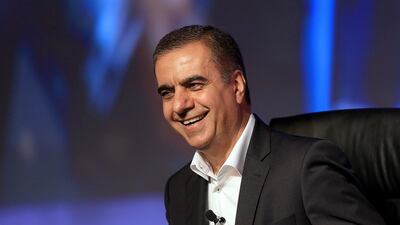Air Arabia, the largest low-cost carrier in the Middle East and North Africa, may order new aircraft for its fleet in the near future as newer, more fuel-efficient plane models are introduced by manufacturers, the airline’s chief executive said.
“When we look at new plane orders…we’ll be looking at both Airbus, Boeing and we’re also looking at Embraer,” Adel Ali said in an interview with The National. “We will continue to evaluate, the industry is changing, new technology is coming in, and at the right time we will put an order in.”
Mr Ali declined to provide a time frame for an order or specify the number of planes which might be bought or leased. He said the company was not looking at debt financing at the moment, but that it would take advantage of low interest rates as it has already internationally and locally.
Air Arabia which started its operations in October 2003, flies to over 120 destinations and has more than 40 Airbus A320s with its fleet set to increase by a third plane delivery at the end of this year, followed by three deliveries in 2018 and six the following year.
Second-quarter net profit of the Sharjah-based carrier, the only listed airline in the UAE, increased 21 per cent to Dh158 million on the back of operational efficiencies and cost cuts. Air Arabia served more than 2.05 million passengers in the second quarter.
_______________
Read more:
Emirates to decide by year end on Boeing or Airbus multibillion dollar order, says Sheikh Ahmed
Air Arabia second quarter earnings increase 21 per cent
Emirates to continue sponsorship of Paris Saint-Germain
_______________
The airline’s load factor, or passengers carried as a percentage of available seats, has hovered at about 80 per cent. That figure is expected to remain within the range, despite pressures on yield margins that have affected the profitability of most of the region’s carriers in the wake of increased capacity in the past three years, currency fluctuations and an oil slump that has put a dent in demand, Mr Ali said.
Yields started falling in 2015 across the industry by about 12 per cent and a similar amount the following year and into the first quarter of 2017, Mr Ali said. Etihad Airways reported a $1.87 billion loss in 2016, while Emirates, the largest airline in the world by passenger traffic, reported an 82.5 per cent annual decline in earnings. Low-cost carrier flydubai reported a 69 per cent decline in its 2016 earnings.
“What has happened in terms of this region is that in 2016 there was a massive capacity increase for the whole region,” Mr Ali said. “When you have all the airports over utilized, you put pressure on the yield. When you have pressure on the yield you have to manage the costs better. An airline like us that has [cost management as part of our DNA], we’re in a better position to manage that period.”
Mr Ali attributed the success of Air Arabia weathering the economic downturn to the carrier remaining true to the low-cost model. Unlike competitors like flydubai or Kuwait-based Jazeera Airways, Air Arabia has not introduced a premium service out of its four hubs in Sharjah, Jordan, Egypt and Morocco.
“We are lucky because we are spread enough…so if one region goes down another picks up,” Mr Ali said. “[It’s been] our business model right from the beginning, because we use a simple kind of aircraft there is much more flexibility on the routes.
“Our focus on efficiency is part of our daily work. Because of that we know what part of the business needs to be looked at. [We] have a much easier way of managing, which is what low cost has been made to be, general conventional airlines are a very complex business to manage and therefore it takes longer to do those cost recoveries and restructuring of the business.”


